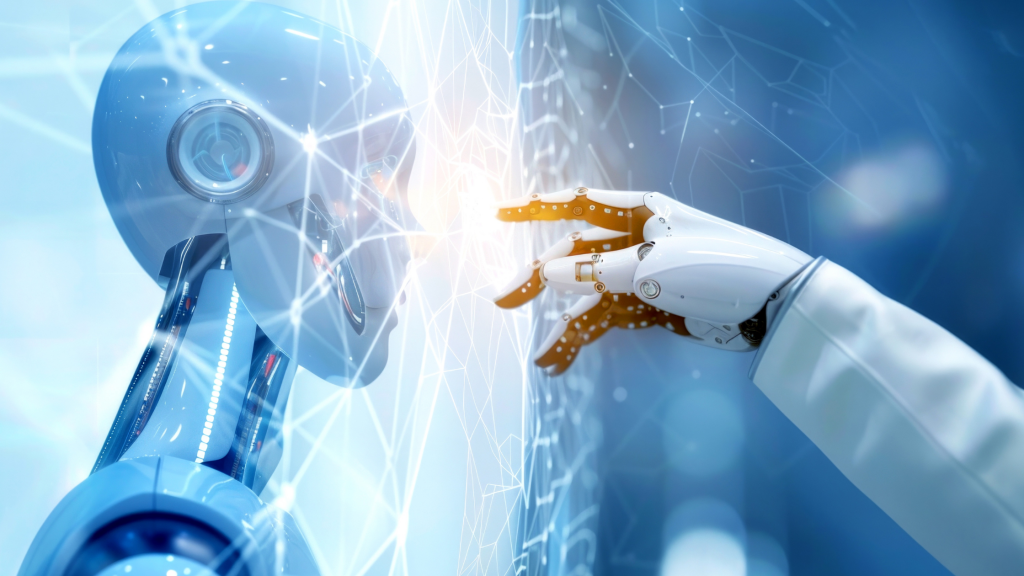Agriculture, one of humanity’s oldest practices, is undergoing a seismic shift. The fields that once depended on manual labor and generational wisdom are now seeing the rise of intelligent machines, data-driven decisions, and automated systems. At the heart of this transformation lies Artificial Intelligence (AI), a powerful ally in shaping a more resilient, productive, and sustainable agricultural landscape.
While AI is making waves across multiple sectors, its impact in agtech is especially noteworthy. From optimizing crop yields to empowering small-scale farmers in rural areas, AI is not just adding efficiency; it is redefining the future of farming.
Smarter Fields: The Rise of Smart Farming
Farming is no longer just about soil and seeds. It’s about sensors, drones, and data. Smart farming, also known as digital or precision agriculture, leverages AI to monitor and manage farm operations with an unprecedented level of accuracy.
Imagine a field where sensors track soil moisture, drones scan crop health from above, and an AI system analyzes this data to recommend the exact amount of water or fertilizer needed. This is not the future. It is already happening. Farmers using these tools can detect plant diseases before they spread, reduce waste, and maximize output with fewer resources.
This level of optimization isn’t just beneficial for large agricultural corporations. With mobile apps and affordable tech solutions, even smaller farms can adopt elements of smart farming tailored to their needs.
Precision Agriculture: Doing More with Less
At its core, precision agriculture is about doing the right thing at the right time in the right place. AI enables this by turning a vast amount of data, from weather patterns and satellite imagery to crop genetics, into actionable insights.
Let’s take irrigation as an example. Traditional methods might rely on fixed schedules or visual assessment, which often leads to overwatering or drought stress. AI systems, on the other hand, analyze soil data and forecast weather to create optimized irrigation schedules, conserving water and improving plant health.
Another powerful example is in pest management. AI-powered platforms can identify pest infestations early by analyzing images captured via drones or smartphones. These systems suggest targeted interventions, reducing the need for blanket pesticide use and protecting biodiversity.
By bringing precision to agriculture, AI helps conserve resources, lower costs, and increase productivity. These are all crucial benefits in a world facing climate unpredictability and rising food demand.
Driving Agri-Innovation on the Ground
Innovation in agriculture is not just about developing new tools. It is about reimagining how farming works from the ground up. And this is where agri-innovation powered by AI truly shines.
Startups and research institutions around the world are developing AI models that can predict crop yields, suggest optimal planting times, and even help in breeding climate-resilient crops. These tools are game changers for farmers dealing with erratic weather, soil degradation, or market volatility.
Consider the case of AI-driven supply chain management. Farmers often suffer due to price fluctuations and poor access to markets. AI solutions are now helping bridge this gap by forecasting demand, optimizing logistics, and reducing post-harvest losses. By making the journey from field to market more predictable, AI is helping create fairer and more transparent agricultural economies.
AI for Rural Development: Empowering the Backbone of Agriculture
Perhaps the most promising and heartening impact of AI lies in rural development. The majority of the world’s smallholder farmers live in rural areas, where access to information, financial services, and modern tools is limited. AI can change that.
Through mobile-based platforms, voice-assisted advisory services, and real-time weather updates, farmers are now getting localized, timely, and relevant information, sometimes in their native languages. These tools guide them in selecting the right crops, understanding market trends, and improving farm practices.
In India, for example, AI is being used to provide sowing advisories based on climate data. In parts of Africa, chatbots are helping farmers identify crop diseases using just their smartphone cameras. These aren’t just conveniences. They are lifelines that can significantly impact income, resilience, and quality of life.
By lowering the barriers to knowledge and decision-making, AI in agtech is making agriculture more inclusive and empowering the very people who feed the world.
A Future Rooted in Intelligence and Sustainability
As we look toward the future, the convergence of AI and agriculture offers more than just technical advancements. It offers hope. Hope for more sustainable food production, better livelihoods for farmers, and a smarter approach to feeding a growing population.
However, this transformation also requires thoughtful implementation. Ethical use of data, equitable access to technology, and training for farmers must go hand in hand with innovation. It is not just about building smart systems. It is about building systems that serve people, especially those on the margins.
The digital future of agriculture is not a distant dream. It is already taking shape in every drone that surveys a field, every AI model that predicts a yield, and every farmer who opens a mobile app to make an informed decision.
In this future, AI in agtech isn’t just changing how we farm. It is changing who gets to succeed in farming, and that might be its most powerful contribution yet.











